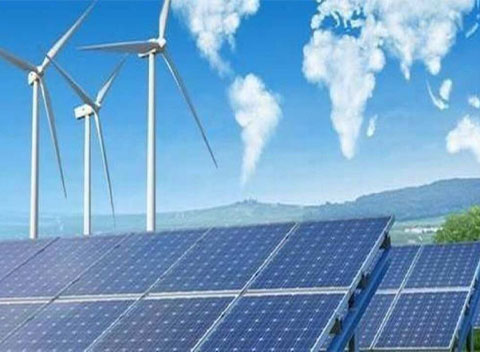Climate change is an existential threat that has the potential to change the course of human history for the worse. In a modest definition, climate change is the process of shifts in weather and temperature patterns, which is long-term and detrimental to our planet. We know that a lot of it is the result of human activities. Fossil fuels are the traditional energy sources that constitute the largest contributors to climate change. They account for over 75% of global greenhouse gas emissions and approximately 90% of all carbon dioxide emissions. For a better, cleaner future, green energy is the key solution.
According to research by the think-tank Carbon Tracker, if wind and solar power continued at their current growth rate, they would push fossil fuels out of the electricity sector in key developed country markets by the mid-2030s, and it is imperative we do that. There are a few key enabling conditions, listed below, through which we can achieve a more widespread replacement of the polluting traditional energy sources.
Emission reduction commitments
A growing coalition of countries, businesses, and other institutions are pledging to reach net-zero emissions. More than 70 countries, including the biggest polluters—China, the US, and the EU—have set their net zero targets, covering about 76% of global emissions. Over 1,200 companies have put in place science-based targets in line with net zero, and over 1,000 cities, 1,000 educational and 400 financial institutions have joined the ‘Race to Zero’. Though commitments are needed to reach net zero in shorter time frames, this is a good start. Our government, too, is on the path to achieving the ambitious target of reaching net zero by 2070 and reducing cumulative emissions by 1 billion tonnes by 2030.
Rising investments in renewables
A whopping $366 billion was committed in the renewable energy sector in 2021, up 6.5% from the year prior, as per Bloomberg New Energy Finance. Significant investments are likely to go into renewables in next few years compared to fossil fuels. Capital markets are supporting investments in clean energy, and, banks too are reducing exposure to fossil fuels. So far, almost 60% of the world’s leading banks have made public commitments to reach net zero carbon emissions in their portfolios, with the biggest investments likely to be in renewable energy. India’s energy investments have reached record levels too, but there is still a long way to go. As a country, India needs to more than double these investments to $30 billion to $40 billion per year for it to reach its target of 450 GW by 2030.
Renewables vs traditional energy sources
There is a very strong business case for promoting renewable energy, as the economics are increasingly in its favour. Renewable energy costs have fallen worldwide, and promise to do so in the future. Solar power is now cheaper than coal in most parts of the world. According to the International Renewable Energy Agency, the cost of electricity from solar photovoltaics fell a staggering 82% in the last decade, while the costs of onshore and offshore wind fell 39% and 29%, respectively. In comparison to fossil fuels, there are many other benefits, including a continuous supply of clean energy and fewer resources like land needed to produce it.
In terms of revenue, India has a tremendous potential to boost revenue. According to a recent report, the potential revenue that can be generated by investing in renewable energy is close to $212 billion.
Growing demand for energy
The big question on everybody’s mind, including the administration and industry, is how to meet the rising energy demand in developing countries. With an increasing rate of urbanisation and industrialisation, the International Energy Agency said in its World Energy Outlook report that the need for energy in India alone would rise by more than 3% annually. At the same time, there is a sharp increase in costs of coal and petroleum globally, and it doesn’t look like it can be reined in. The continuing geopolitical conflicts along with increasing prices of traditional sources, make a strong case for renewable energy. Considering that renewable energy can be made available at scale round-the-clock and it is economically feasible in comparison, industries are looking to transition speedily.
While there are several advantages of renewable energy over traditional fuel sources, it needs a continuous push though to realise its full potential. There are implementation and geopolitical issues involved that need to be resolved. Supply chains for clean energy need to be diversified to a much larger number of countries. As traditional energy sources get replaced, revenues and employment will shift from certain geographies to others and this will need to be carefully managed.
A ‘once in a generation’ opportunity to have a greater participation of women in the energy sector must not be missed. Young people, too, have their work cut out given that they are the biggest stakeholders in the future of our planet.
Keeping this in mind, the ministry of environment, forest and climate change, along with United Nations Development Programme (UNDP), jointly launched ‘In Our LiFEtime’, a campaign that both urges and encourages young people between the ages of 18 to 23 years to adapt and promote sustainable lifestyles.
In summary, the transition from traditional sources of energy to renewable energy will provide us economic and environmental benefits that can help clean the world.
We must, however, push this transition with full force and jointly with other nations within this decade, to make a material change to the prospects of making the world safer from the adverse effects of climate change. Several reports released during the recent COP 27 in Egypt reminded us of this once again.
The author is Chairman and CEO ReNew Power



